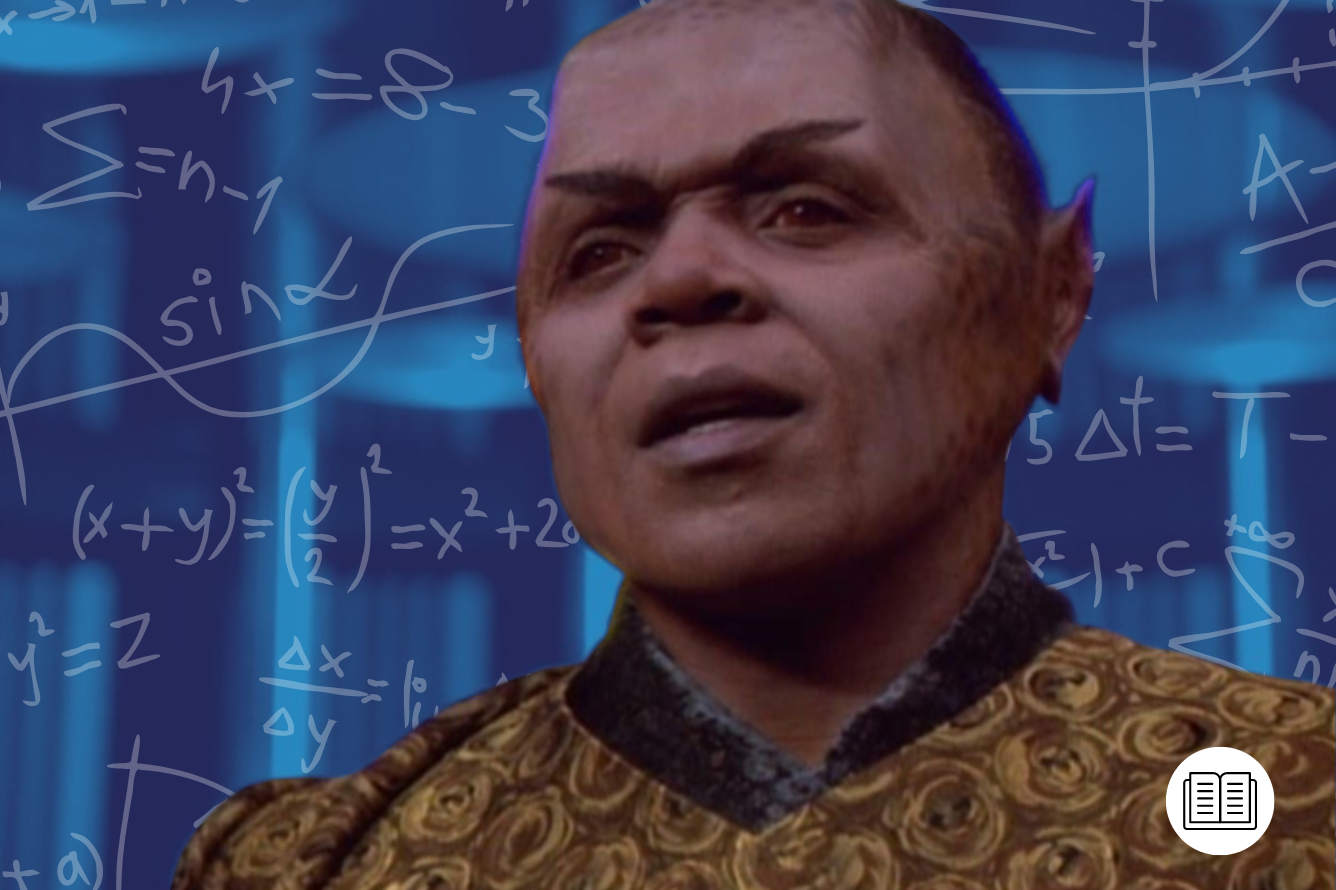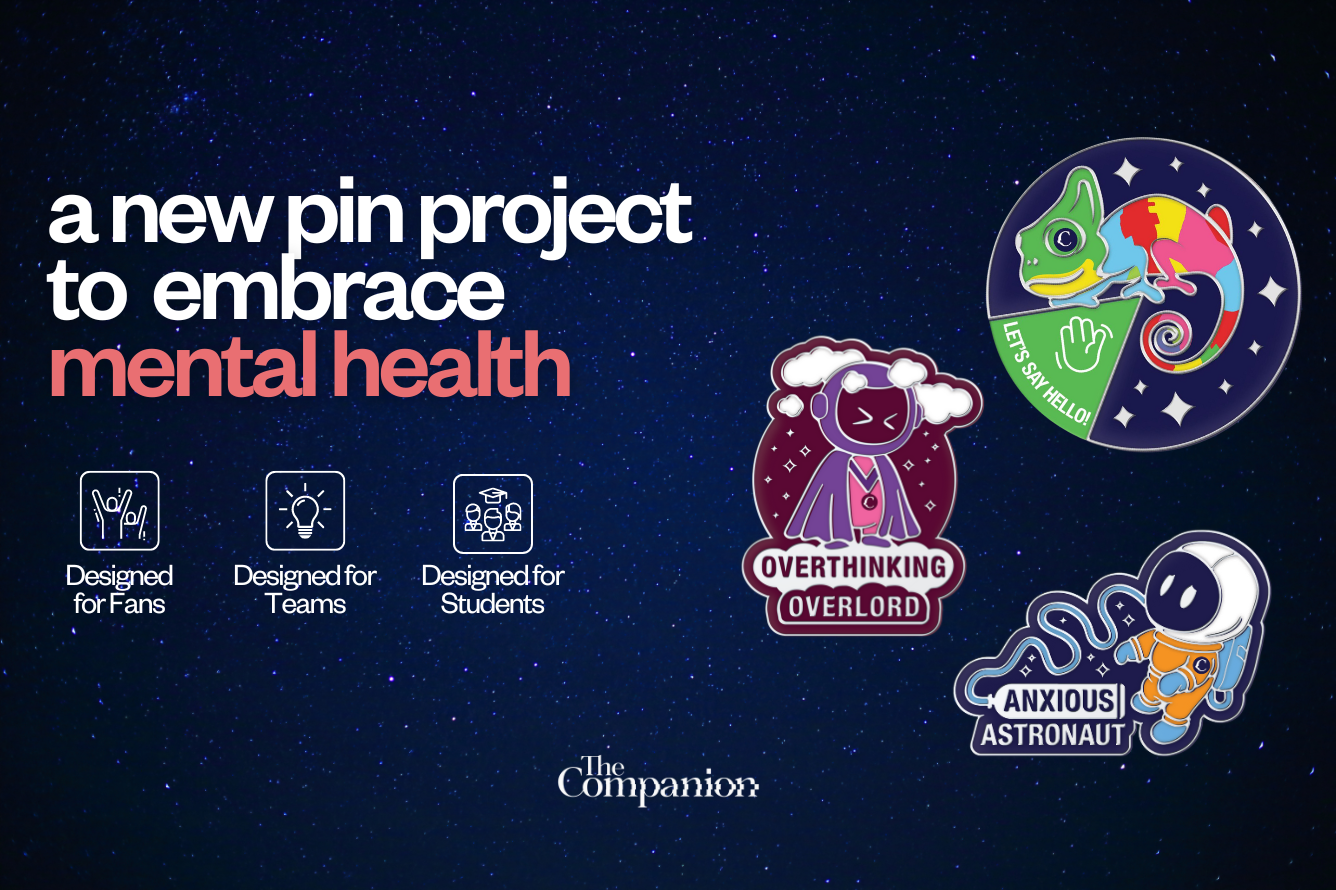As a starship captain, you’ve got to make difficult decisions—it’s part of the job description. Captain Kirk allowed Edith Keeler to die to save the world from the Nazis, despite falling in love with her (Star Trek: The Original Series, ‘The City on the Edge of Forever’ – S1, Ep28). Captain Picard asked Worf to donate his blood to a dying Romulan, despite knowing he wouldn’t consent willingly (Star Trek: The Next Generation, ‘The Enemy’ – S3, Ep7). Captain Sisko enlists Garak’s help to get the Romulans to join the war, despite having to lie and cheat (Star Trek: Deep Space Nine, ‘In the Pale Moonlight’ – S6, Ep19).
But no decision has been more divisive than Janeway’s choice to call time on Tuvix—the ‘hybrid’ being that was part Tuvok, part Neelix – in the Star Trek: Voyager episode ‘Tuvix’ (S2, Ep24). Looking back 26 years later, can we turn to real-world science to explain the bizarre happenings of this episode? And, more importantly, are you Team Janeway or Team Tuvix?
What Do You Get if You Cross An Orchid, a Talaxian, and a Vulcan?
In the infamous episode Tuvix, stoic Vulcan Tuvok (Tim Russ) and morale officer and chef Neelix (Ethan Phillips) merge into one being thanks to an alien orchid and a transporter malfunction. The new Neelix-Tuvok hybrid names himself Tuvix after deciding it had a better ring to it than Neevok.

But how did it happen? In the episode, the conclusion is “symbiogenesis”, which Janeway calls “a rare reproductive process.” She says: “Instead of pollination or mating, symbiogenetic organisms merge with a second species.” The result? Tuvix explains that these organisms “form a third unique species, a hybrid.”
It may sound like science-fiction, but real-world science can explain symbiogenesis. In his book, Live Long and Evolve, Mohammed A.F. Noor, the Professor of Biology and Dean of Natural Sciences at Duke Trinity College of Arts and Sciences and a consultant on Star Trek: Discovery Seasons 3 and 4, explains that it was biologist Doctor Lynn Margulis who defined “symbiogenesis” as: “instances in which long-term associations between members of different species give rise to new behaviors, new tissues, or new species.”

If we break it down, the term means ‘bringing together to create life’ (or thereabouts). It’s often found in the plant world, which explains why in this episode, the orchid causes it. But it’s also used to describe other symbiotic relationships here on Earth when two species have developed a whole new ‘thing’ from their union. And—as we’ve explored before in the science of symbiosis—there are ‘good’ and ‘bad’ outcomes.
“There are good examples of symbiogenesis on Earth,” Noor writes. “Fusing Vulcan and Talaxian genes into one individual of a new species could be considered such an event.” However, there are drawbacks too. While it yields a new species, “it fails to perpetuate the parental species and therefore cannot be sustained as a reproductive process per se,” Noor writes. So, it’s not comparable to reproduction, as Janeway suggests.

But are there other ways to create an entirely new species? Noor explains that interspecies mating can also result in a merging of genomes to create a new species. “Many plant species experience rare instances of ‘allopolyploidy’,” Noor writes. “Formation of a new species through breeding two different species wherein the resulting new species has three or more copies of its genes.”
We’re not simply talking about a new life form from two different species here, but a new species entirely with way more copies of genes than you’d usually expect. Here’s how Noor explains it:
“Imagine species A has two copies of its genes, and species B has two copies of its genes. Rather than forming sperm and egg (or pollen and seed) with just one copy in each, the gametes retain both copies, and the resultant offspring is a new species with four gene copies: two derived from species A and two derived from species B.”
This new species would reproduce asexually or sexually but with other polyploids from the same two parent species. They couldn’t sexually reproduce with parent types, which means “it is truly a new species distinct from either parent,” Noor writes. Some prevalent species here on Earth have been formed via allopolyploidy, including cotton and soybean.
“Like an allopolyploid, Tuvix presumably had both copies of Lt. Tuvok’s and Neelix’s genes,” Noor writes. “Rather than just one copy of each, as if he had been their offspring.” In the episode Tuvix isn’t a bit of one or the other—he’s not like their son—he’s both Neelix and Tuvok rolled into one entity. That’s not how it works here on Earth, but the idea is at least rooted in a little real-world science.
The other question is, could a rogue flower really cause this kind of transformation? That’s a hard no. The episode’s reasoning for how the orchid led to Tuvix—due to lysosomal enzymes—doesn’t hold up under scrutiny. Instead, Noor explains that these enzymes play a role in digestion and other essential processes and are already present in humans.
This episode takes a nugget of real-world science and spins a dramatic—and at times goofy—transporter malfunction story from it. There have been several similar ones over the years, too. In the Star Trek: The Original Series episode ‘The Enemy Within’ (S1, Ep5), the transporter is responsible for tearing Captain Kirk into his ‘good’ and ‘evil’ halves. We also learn that another transporter slip-up created a clone of William T. Riker (Jonathan Frakes), called Thomas Riker, in the Star Trek: The Next Generation episode ‘Second Chances’ (S6, Ep24).
There are also examples outside of the Trek-iverse. Like in David Cronenberg’s The Fly (1986), when scientist Seth Brundle (Jeff Goldblum) uses his teleporting tech without realizing there’s a fly in there with him, fusing them at a molecular genetic level.
The Janeway Moral Dilemma
Despite being created in a freak accident, Voyager’s Tuvix isn’t a horrifying character. Sure, crew members feel a little weirded out in his presence—especially those close to him—and miss Neelix and Tuvok. But it’s not scary to see Tuvix like it would be to come face-to-face with Seth as he’s becoming more fly than man. At times, Tuvix even brings out the best of Tuvok and Neelix. He can connect with Kes, stand up to Janeway, have fun with Paris, and do both of their jobs well. In her Captain’s Log, Janeway even says: “Although I feel a bit guilty saying it, his cooking is better than Neelix’s. My taste buds are definitely happy to have him around.”

This makes the dilemma of what to do about Tuvix, when the Doctor (Robert Picardo) finds a way to separate the Tu- from the -vix, a difficult decision. In an interview with Polygon, Robert Picardo said:
“He was a boon to the ship […] So I remember being surprised when I read the script. I knew, given the nature of television, that everything had to be fixed in 43 minutes. But I was not expecting to read Tuvix saying, ‘I don’t want to die.’”
Janeway reasons that the procedure to separate them should go ahead so that the crew can get Neelix and Tuvok back. But others aren’t so sure. The Doctor refuses to carry out the procedure himself because even though he’s a hologram, he says that he’s programmed to follow the Hippocratic oath, which includes: do no harm.
When it seems like his fate is sealed, Tuvix makes a heart-breaking plea to the crew: “Each of you is going to have to live with this, and I’m sorry for that. For you are all good, good people. My colleagues, my friends, I forgive you.” But no one steps in. Janeway performs the procedure herself, restoring Neelix and Tuvok and, I guess, killing Tuvix?

Whether she was right is still a hotly-debated topic more than two decades later. It’s spawned countless articles and threads in forums—there are also many memes about Janeway being a heartless killer. What do others think? “In my opinion, Janeway killed Tuvix,” Mohamed Noor tells The Companion.
“She destroyed one person to ‘hopefully’ get back two others successfully, and against that person’s will. While I understand what she did, I do not agree with the decision, #TeamTuvixLives.”
According to an entry on Memory Alpha, in The Official Star Trek: Voyager Magazine issue 13, the actor portraying Tuvix, Tom Wright, said: “There isn’t any moralizing […] there is no struggle between good and evil. It’s purely a no-win situation.” He says it’s “inevitable” they would be separated. “There would be no drama without that separation,” he says. He was quizzed about it again in a Reddit AMA in which he said: “If I had two loved ones that would disappear forever, I might have to make an unpleasant but necessary choice. It remains an interesting dilemma.”

Of course, there’s no ‘right’ answer here. It’s like several other episodes of Trek that ask: What is life? In ‘Tuvix’, Janeway asks: “At what point did he become an individual and not a transporter accident?” This reminds me of Star Trek: The Next Generation’s ‘The Measure of a Man’ (S2, Ep9) when Picard defends Data, saying he’s alive and has rights. At the same time, Riker must argue against him. Or when Spock establishes a mind meld with the Horta, a silicon-based life form that looks a bit like lava, realizing they’re alive and mean no harm in the Star Trek: The Original Series episode ‘Errand of Mercy’ (S1, Ep26).
The mission of Starfleet, or the Enterprise at least, has always been: “to seek out new life”, and these stories show us that life can take many forms—hybrid, artificial, rock-like creatures. In determining who or what is truly alive and whether they have agency, we are forced to watch our favorite characters make difficult decisions and live with the consequences. In doing so, we can’t help but question our own morals, too. Which begs the question: what would you have done in Janeway’s shoes?
This article was first published on August 24th, 2022, on the original Companion website.
The cost of your membership has allowed us to mentor new writers and allowed us to reflect the diversity of voices within fandom. None of this is possible without you. Thank you. 🙂









